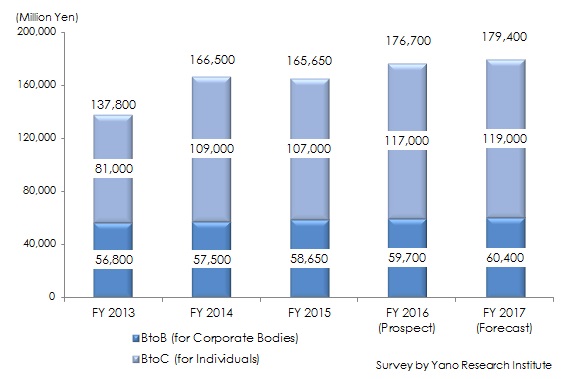e-Learning Market in Japan: Key Research Findings 2017
Research Outline
- Research period: January to March, 2017
- Research target: e-learning system developers, architect, and distributors, e-learning contents developers, producers, and providers, companies managing and providing business training and seminars using e-learning (operators of private preparatory schools, language schools and business trainers), learning software developers, producers, and distributors
- Research methodologies: Face-to-face interviews by the expert researchers, surveys via telephone and email, and literature research.
<What is the e-Learning Market? >
The e-learning market in this research indicates a form of education services provided through internet and other networks. The learning methods using gaming devices and software for PCs are not included. The e-learning contents ranges extensively from business, academic subjects, languages, IT technologies, qualification acquisition, to various cultural and general knowledges.
Summary of Research Findings
- Domestic e-Learning Market Size in FY2016 Projected to be 106.7% on Y-o-Y Basis to Achieve 176.7 Billion Yen, and Likely to Continue Growing for FY2017
The domestic e-learning market in FY2016 is projected to rise to 176.7 billion yen, 106.7 % of the size of the preceding fiscal year. Both the B-to-B market for corporate bodies and the B-to-C market for individuals are expected to be on the rise, the tendency of which is likely to continue for the both market of B-to-B and B-to-C in FY2017.
- E-learning Market for B-to-B Showing Stable Growth, and for B-to-C Turning for the Better
The e-learning market for B-to-B in FY2016 is projected to be stable, attaining 59.7 billion yen, 101.8% of the size of the preceding fiscal year, because improved convenience of e-learning has brought about brisker use at the customer companies. The e-learning market for B-to-C, which scaled down last year, is expected to turn for the better in FY2016. The factors that contributed to the market expansion include: More sufficient assortment of services offered by the leading correspondence education businesses, more classes given through visual media at preparatory schools, and some other learning contents such as those provided by languages schools, having by and large recorded stable growth.
- Figure 1: Transition and Forecast of e-Learning Market Size
